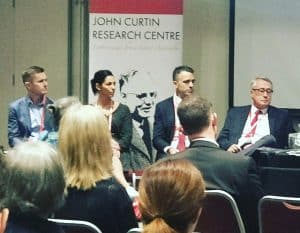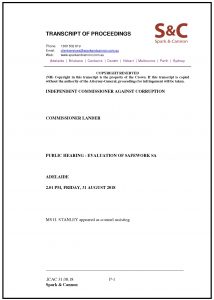This afternoon the Australian Government releases the findings of the Royal Commission into Misconduct in the Banking, Superannuation and Financial Services Industry. This has little to do with occupational health and safety (OHS) directly but it has a lot to do with:
- organisational culture,
- business ethics,
- the social licence to operate,
- the morality of capitalism, and
- Trust
OHS needs to operate within all these elements of business operations and all Australian businesses will be watching how the Government and other political parties react to these findings.
Continue reading “What can we practically do to improve the OHS culture of Australia’s business sector?”


 In 2017 the Queensland Government was advised to prohibit
In 2017 the Queensland Government was advised to prohibit 
